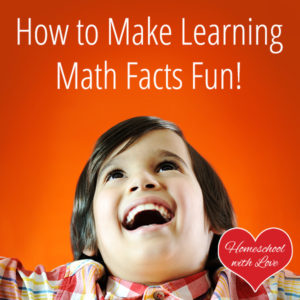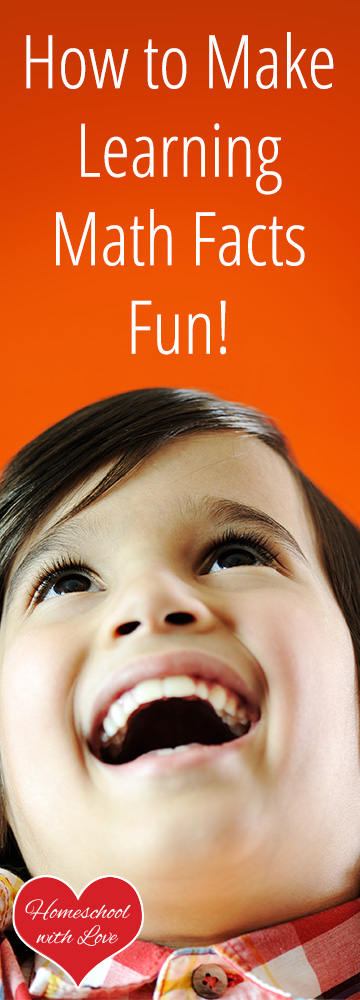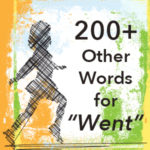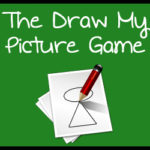
We all know that memorizing math facts isn’t the most exciting part of getting an education. For some kids, it ranks up there with watching the grass grow.
BUT there are some things you can use to make this tedious task a little more pleasant. Activities like games, songs and funny mnemonics make learning math facts far more interesting for kid and “interesting” means faster learning and better retention.
Over the years, I’ve used a variety of games, songs, and mnemonic programs to make math facts practice fun for my kids. I thought I’d share some of them with you today.
*This post contains paid links. I earn a small commission from the sale of products purchased via these links. Please see my disclosure for details.
Math Games
Kids love games. (So do I for that matter) They make learning fun. Here are some games that you might want to try out with your family.
Board Games
Totally Tut
Totally Tut is a totally fun game for practicing math facts! Instead of just memorization practice, it’s a great opportunity for kids to use logic and manipulate numbers. At the beginning of the game, each player draws a target number like 5 which goes at the top of her pyramid. The object of the game is to create number sentences like 4 + 3 – 2 for the target numbers. To complicate things, players can swap or steal from other players. There are two levels of play. The first uses just addition and subtraction symbols. The second adds the multiplication and division symbols. If you play this game with kids of various ability levels, you could use an addition or multiplication chart to help the kids who struggle.
Smath
Do your kids like playing Scrabble or doing crossword puzzles? Then Smath is the game for them. Players build number sentences for points. There are two levels of play. One level uses just addition and subtraction. The harder level also includes multiplication and division. Like Totally Tut, children who aren’t confident with all of their facts could use a chart to help them play.
Card Games
Quick Pix
Quick Pix is one of our favorite card games. It’s a short, fast-paced game of chance and skill. Players must race to match their number cards to a card in the center that has a math fact. The first person to match all 5 of his number cards wins the round. It’s a really exciting game! We’ve often used it for a short, fun break between subjects or during recess on rainy days.
There are two Quick Pix math games available. One is Quick Pix Math and it covers addition and subtraction facts. The other is Quick Pix Multiplication and, as the name implies, it covers only multiplication facts.
Quick Pix also makes card games about animals, money, and geography. The animals version has by far been our favorite.
Snap It Up
Snap It Up is another exciting, fast-paced card game. Each player races to draw and pass his cards until he makes an equation. The first person to make 3 equations is the winner. You can find two versions of this game. One is for practicing addition/subtraction facts and the other is for multiplication facts. This is another game that is nice for short breaks between subjects.
Math War
Your child can play the classic game of War while practicing math facts with Math War cards. One really nice feature about his game is that it can be modified to suit your child’s ability level. Simply remove the cards of facts she hasn’t studied yet. You can buy two different versions of this game. One is for addition and subtraction practice. The other is for multiplication practice.
Digital Products
There are plenty of digital products on the market today ranging from software to gadgets that help kids learn math facts. Here are some that we’ve tried.
Timez Attack
The best software I have seen for learning math facts is Timez Attack. It requires your child to master a set number of facts before moving on to new facts. The multiplication and division games cover the facts 2 – 12.
In this video game, your child takes a cute creature through various scenarios including a dungeon, palace, lava world, rock tower, ruins, and a machine world. On each level, your child defeats other creatures by answering the math facts on their bellies. These creatures turn into keys.
New math facts are taught with arrays of circles so kids see the patterns. An addition/subtraction version of the game is in beta right now. I tested it out and it looks promising.
Math Shark
If you are looking for a portable electronic game for practicing math facts, you might want to consider MathShark. This gadget offers 8 levels of quizzes in 7 different math skills: addition, subtraction, multiplication, division, fractions, decimals, and percents.
On top of it all, it is a full function calculator. Very handy. Every time your child completes a quiz, a few little words of encouragement come up like, “Way to go.” My kids enjoyed this gadget when we traveled in the car.
Math Mat Challenge Game
Do you have a kinesthetic learner? Or do you have a child with oodles of energy? Then you might want to try out the Math Mat Challenge Game. Kids get to jump on or touch numbers on this large mat in response to questions. The mat asks the questions so you don’t have to do anything.
There are 3 different games with 2 skill levels each. The skills covered are number recognition, counting, and addition and subtraction facts. I like this toy because it’s a great way to combine Phy. Ed. with Math.
Math Songs
Math songs are a good tool for memorizing. They are especially helpful for auditory learners. Here are some recordings you and your family might enjoy.
Audio Memory
Audio Memory is one of our favorite companies for educational songs. The tunes they create are catchy making it easier for kids to remember. One nice feature of their math collection is that there are both practice songs and test songs in each recorded set. The practice songs are ideal for learning and the test songs make the perfect quick evaluation. Titles available include Addition, Subtraction, Multiplication, and Division. They can be purchased at Amazon in either a CD or MP3 format.
Mnemonics
Mnemonics have been used for years to aid in memorization. Here is a program which uses mnemonics for multiplication facts.
Memorize in Minutes: The Times Tables
Some children struggle to memorize math facts because they need a visual picture to aid them. That’s because our brain works in pictures, not letters and numbers. Let me show you how. Right now, I want you to think of two flowers. Alright, what did you see? Did you imagine the number 2 and the word “flowers”? Probably not. You saw an image of two flowers, right? That’s how the brain works. That is why imagery is helpful for learning.
The Memorize in Minutes program provides children with a picture for each number to help them learn times tables. It also includes over 60 activities for visual, auditory, and kinesthetic learners. I found these to be very useful. I had success using this program with my younger child. She is a visual learner and she found the pictures on the flashcards helpful for memorizing. She also enjoyed the funny stories that went along.
If you’re looking for more ways to make math enjoyable for your kids, you might want to listen to Susan Evan’s audio workshop, Overcoming Math Frustration. She offers tips for making math concepts exciting using a hands-on approach. It’s a really helpful workshop.
Many blessings,

P.S. I also have some math printables here like flash card games that make math facts fun! I think your kids will love them!
















